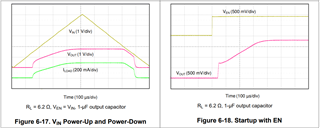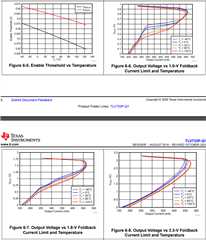Other Parts Discussed in Thread: TPS745-Q1
Hello team,
To consider the current rating of the buck converter in front of the TLV733P-Q1, we would like to know the inrush current of the TLV733P-Q1 during startup.
How to calculate/estimate this?
Do you have a waveform of the input current during startup?
Customer schematic is not decided yet.
Vin = 3.3V, Vout = 1.8V, Cout=TBD
Thank you.
Regards,
Hirata





